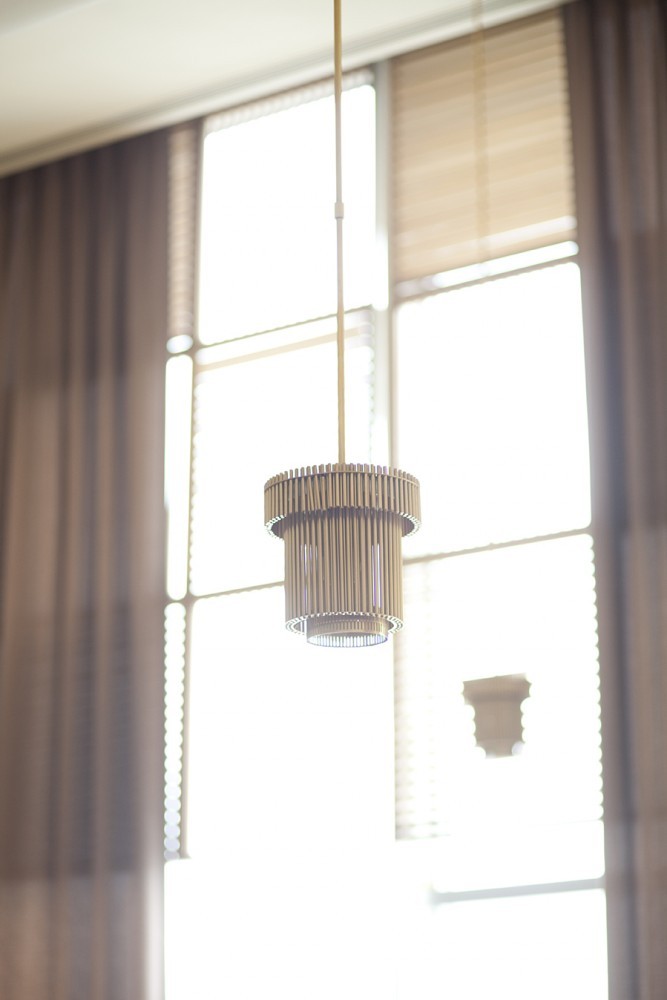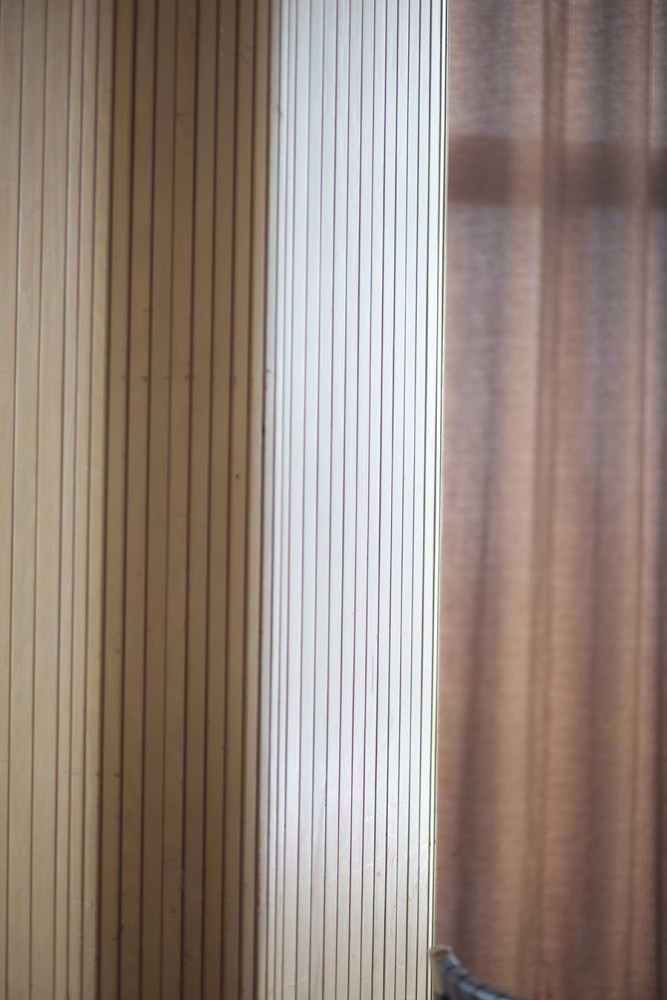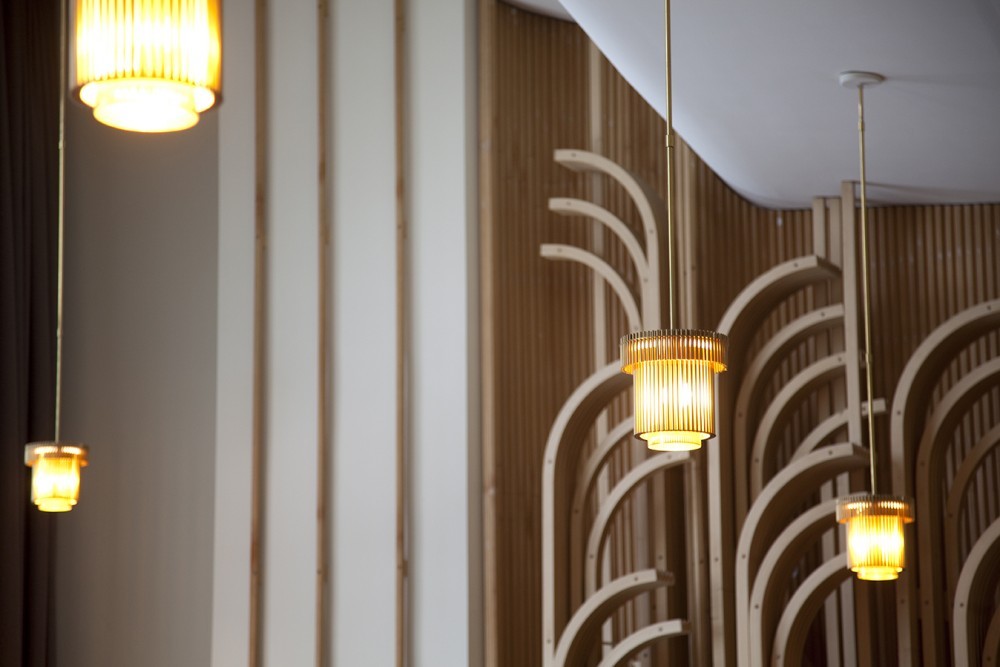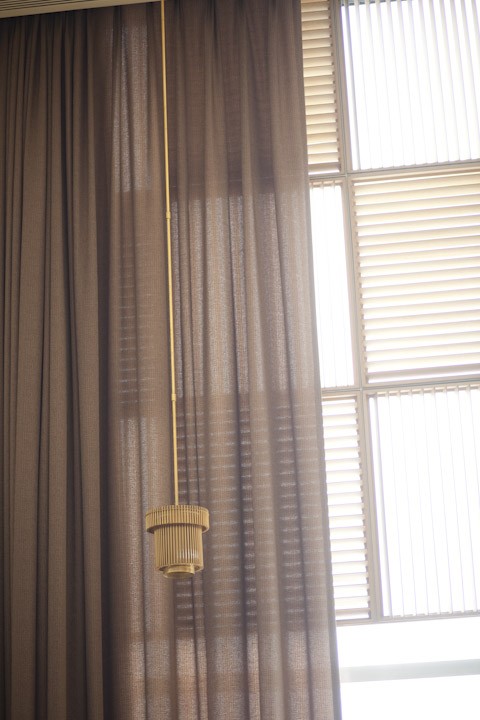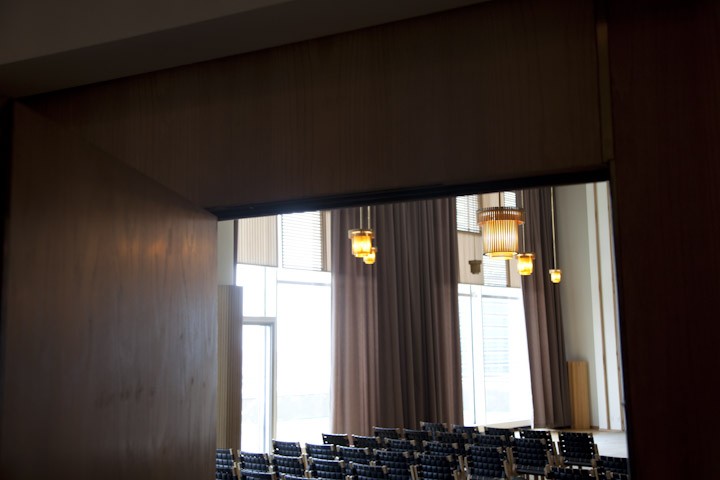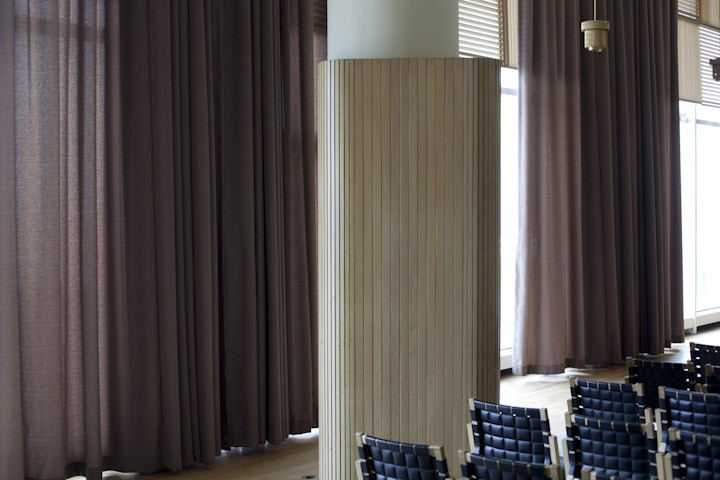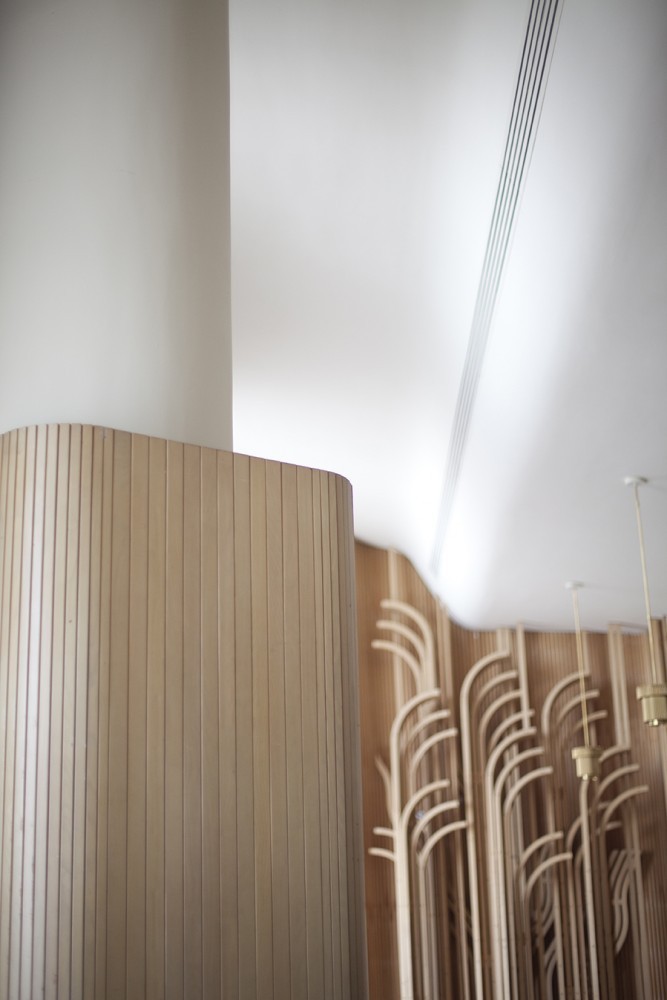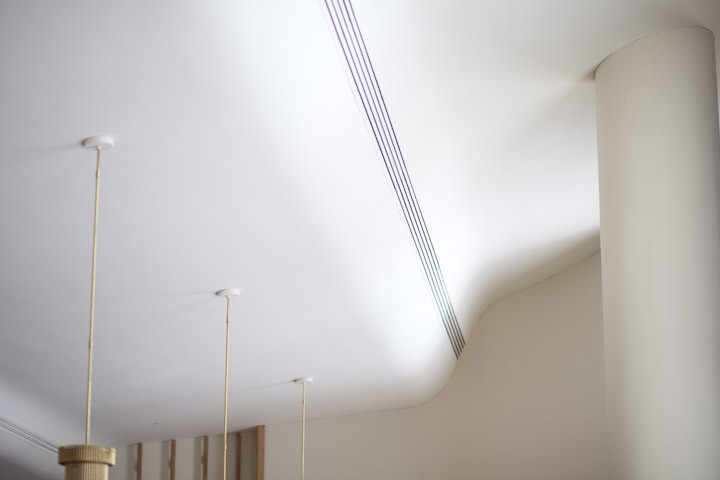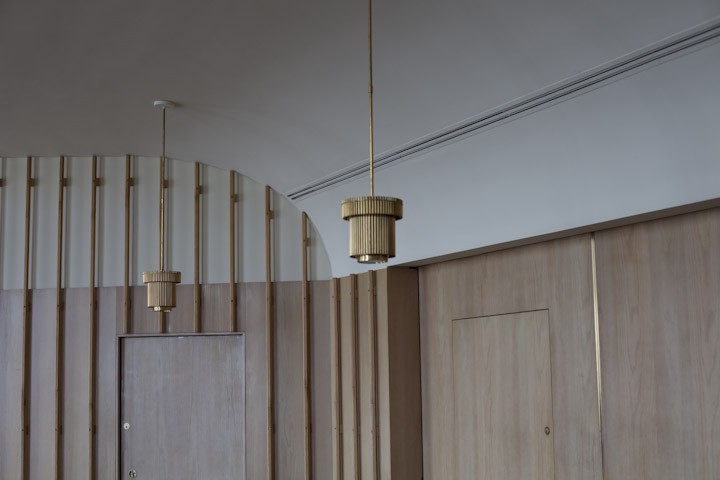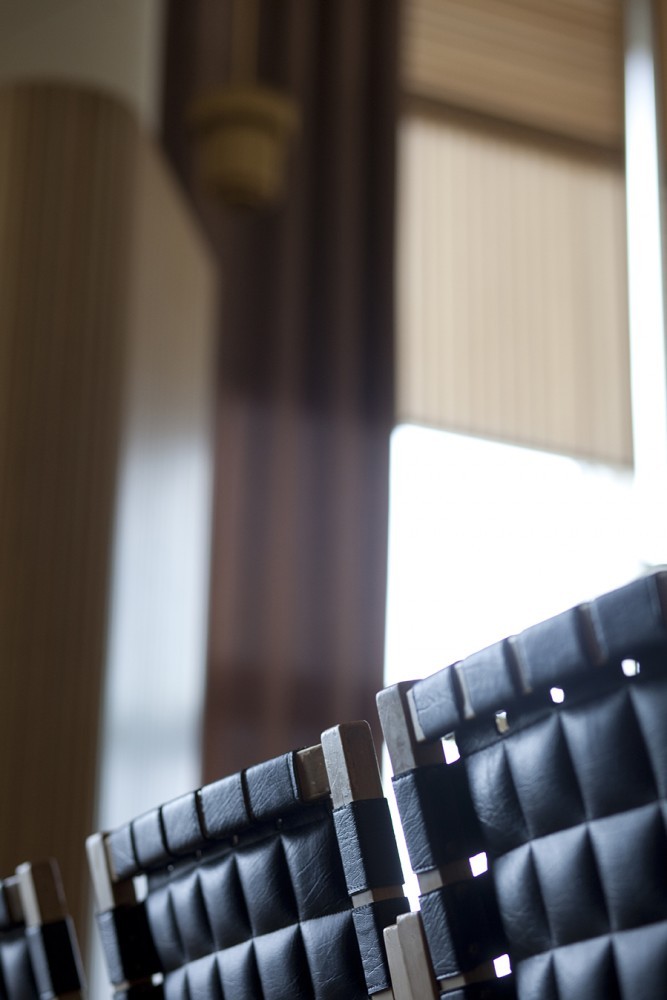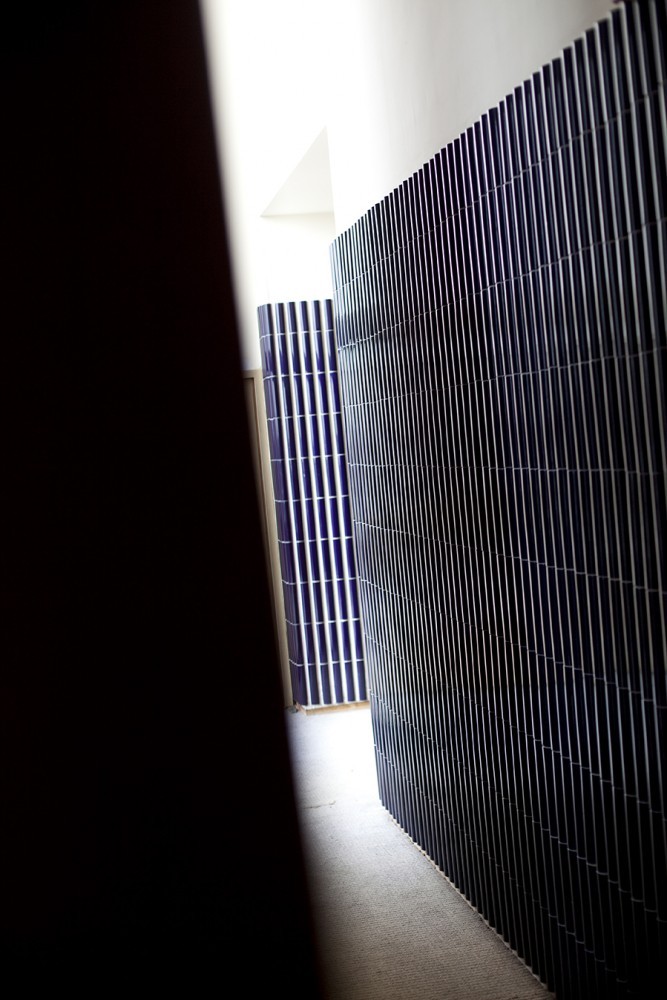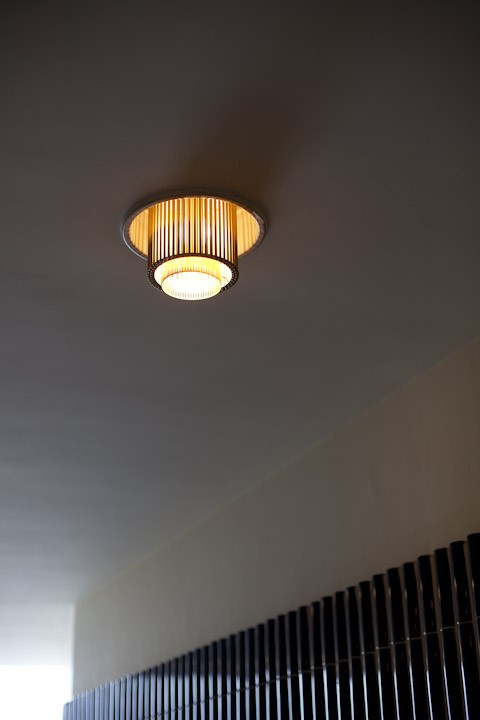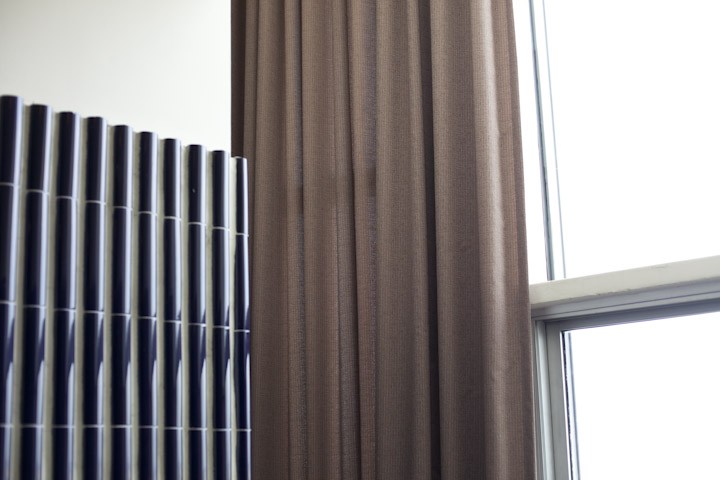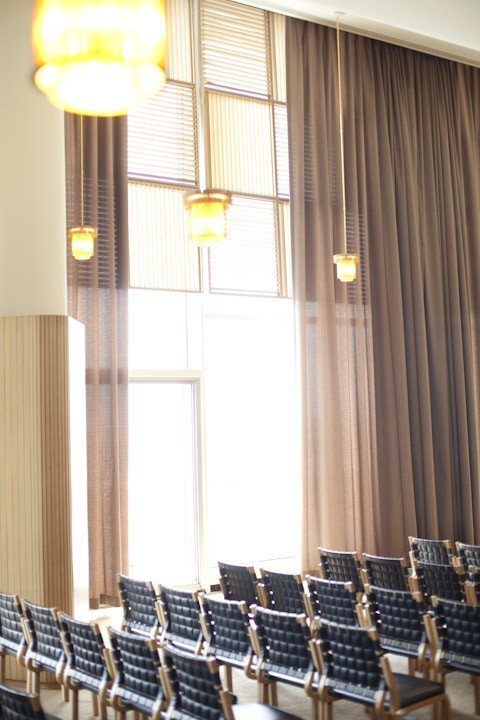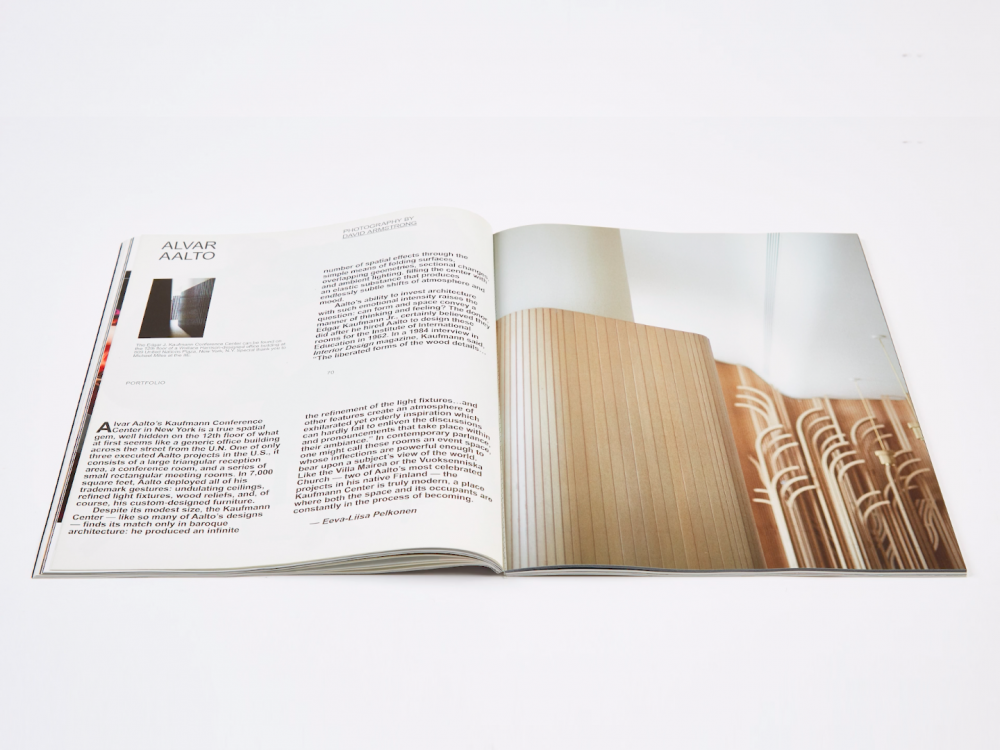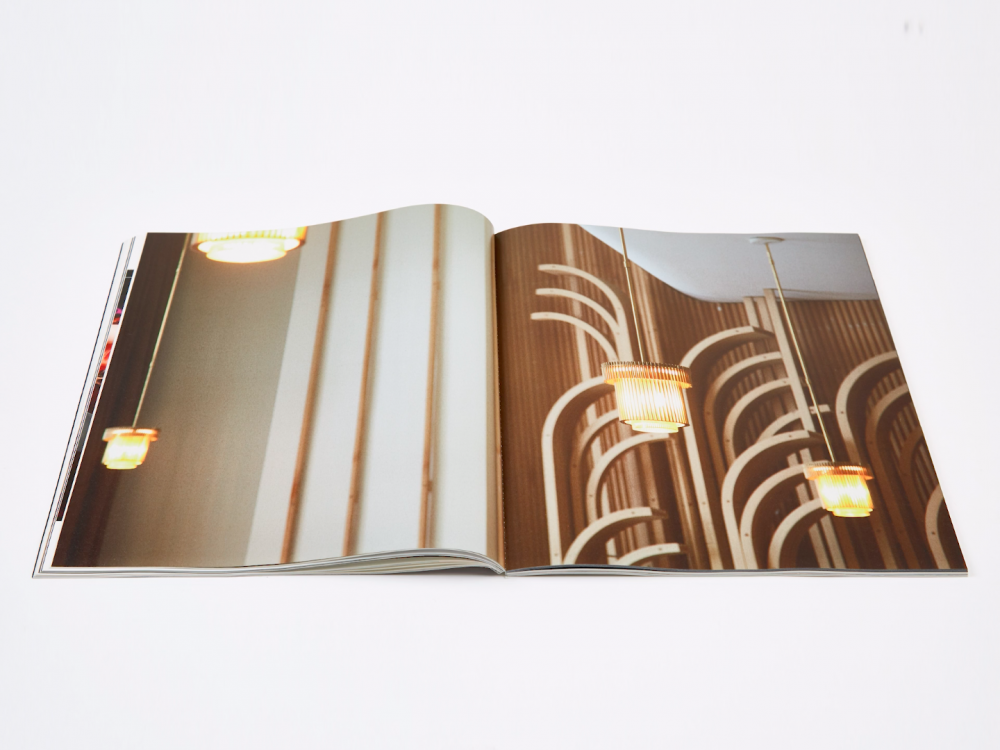Alvar Aalto’s UN Conference Center photographed by David Armstrong
Alvar Aalto’s Kaufmann Conference Center in New York is a true spatial gem, well hidden on the third floor of what at first seems like a generic office building across the street from the U.N. One of only three executed Aalto projects in the U.S., it consists of a large triangular reception area, a conference room, and a series of small rectangular meeting rooms. In 7,000 square feet, Aalto deployed all of his trademark gestures: undulating ceilings, refined light fixtures, wood reliefs, and, of course, his custom-designed furniture.
-

Alvar Aalto’s Kaufmann Conference Center in New York. Photography by David Armstrong for PIN–UP.
-

Alvar Aalto’s Kaufmann Conference Center in New York. Photography by David Armstrong for PIN–UP.
-

Alvar Aalto’s Kaufmann Conference Center in New York. Photography by David Armstrong for PIN–UP.
Despite its modest size, the Kaufmann Center — like so many of Aalto’s designs — finds its match only in Baroque architecture: he produced an infinite number of spatial effects through the simple means of folding surfaces, overlapping geometries, sectional changes, and ambient lighting, filling the center with an elastic substance that produces endlessly subtle shifts of atmosphere and mood.
-

Alvar Aalto’s Kaufmann Conference Center in New York. Photography by David Armstrong for PIN–UP.
-
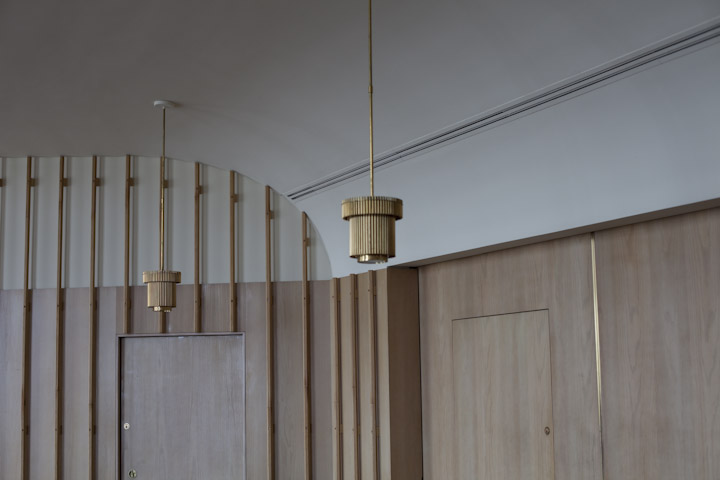
Alvar Aalto’s Kaufmann Conference Center in New York. Photography by David Armstrong for PIN–UP.
-

Alvar Aalto’s Kaufmann Conference Center in New York. Photography by David Armstrong for PIN–UP.
Aalto’s ability to invest architecture with such emotional intensity raises the question: Can form and space convey a manner of thinking and feeling? The donor, Edgar Kaufmann Jr., certainly believed they did after he hired Aalto to design these rooms for the Institute of International Education, in 1962. In a 1984 interview in Interior Design magazine, Kaufmann said, “The liberated forms of the wood details … the refinement of the light fixtures … and other features create an atmosphere of exhilarated yet orderly inspiration which can hardly fail to enliven the discussions and pronouncements that take place within their ambiance…”
-
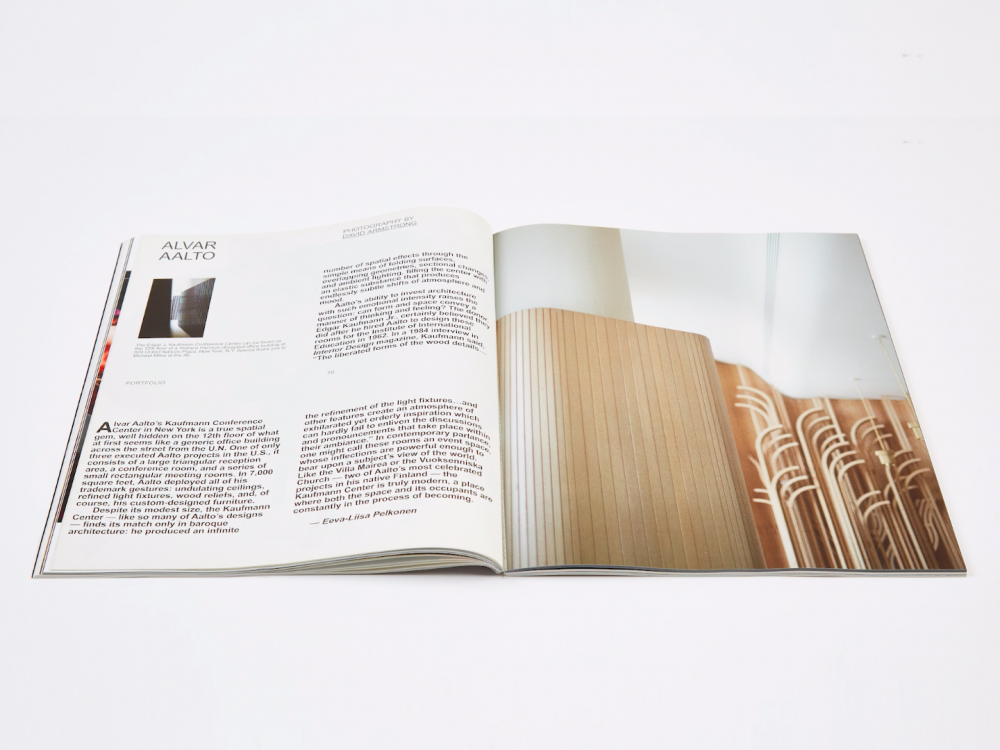
David Armstrong’s images of Alvar Aalto’s Kaufmann Conference Center in New York, published in PIN–UP 7, Fall Winter 2008/09.
-

David Armstrong’s images of Alvar Aalto’s Kaufmann Conference Center in New York, published in PIN–UP 7, Fall Winter 2008/09.
In contemporary parlance, one might call these rooms an event space, whose inflections are powerful enough to bear upon a subject’s view of the world. Like the Villa Mairea or the Vuoksenniska Church — two of Aalto’s most celebrated projects in his native Finland — the Kaufmann Center is truly modern, a place where both the space and its occupants are constantly in the process of becoming.
Text by Eeva-Liisa Pelkonen
Photography by David Armstrong
Special thank you to Emma Reeves
Taken from PIN–UP 7, Fall Winter 2008/09

